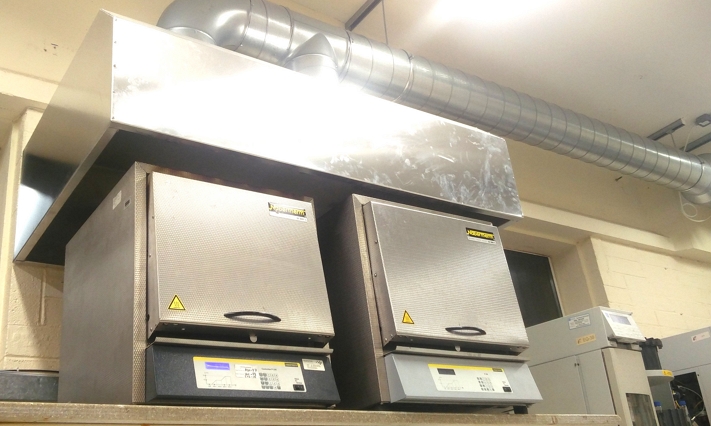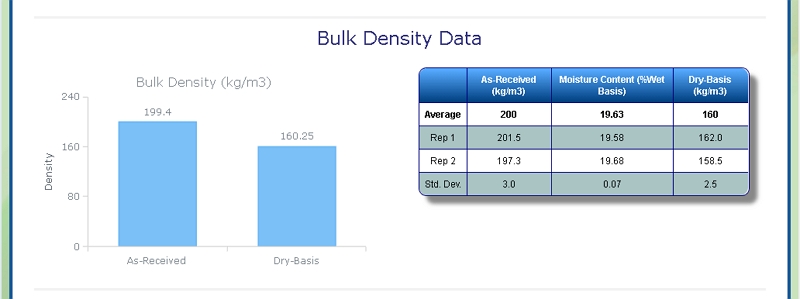Analysis of Spent Mushroom Compost
Background on Spent Mushroom Compost
Mushroom producers either receive Phase II or Phase III composts. Once the compost is fully colonised mushroom production involves placing a casing layer of peat on top of the compost. This layer promotes the formation of promordia; mushroom pins. Approximately three weeks after this point the first crop (first flush) of mushrooms can be harvested. The compost can then be rewet allowing for the harvesting of subsequent flushes at approximately 7 day intervals. Typically up to three flushes are harvested from each compost shipment. The remaining material is known as SMC and can sometimes be sterilised (cooked out) by heating for 12 hours at 70 degrees Celsius.
The overall composition of SMC will vary according to the time of year, the amount of peat casing put on by the grower, the compost manufacturers, and the amount of water added to the mushroom by the grower. The chemical composition of the ultimate spent material will be significantly different from the composite of the materials that make up the mushroom compost and casing layer, however, due to the effects of the composting process and mushroom growth.
Analysis of Spent Mushroom Compost at Celignis
Celignis Analytical can determine the following properties of Spent Mushroom Compost samples:
Lignocellulosic Properties of Spent Mushroom Compost
Cellulose Content of Spent Mushroom Compost
Typically the cellulose content of spent mushroom compost is higher than the hemicellulose content but lower than the lignin content.
Click here to see the Celignis Analysis Packages that determine Cellulose Content
Request a QuoteCellulose Content
Hemicellulose Content of Spent Mushroom Compost
Click here to see the Celignis Analysis Packages that determine Hemicellulose Content
Request a QuoteHemicellulose Content
Lignin Content of Spent Mushroom Compost
Click here to see the Celignis Analysis Packages that determine Lignin Content
Request a QuoteLignin Content
Starch Content of Spent Mushroom Compost
Click here to see the Celignis Analysis Packages that determine Starch Content
Request a QuoteStarch Content
Uronic Acid Content of Spent Mushroom Compost
Click here to see the Celignis Analysis Packages that determine Uronic Acid Content
Request a QuoteUronic Acid Content
Enzymatic Hydrolysis of Spent Mushroom Compost
Click here to see the Celignis Analysis Packages that determine Enzymatic Hydrolysis
Request a QuoteEnzymatic Hydrolysis
Bioenergy Properties of Spent Mushroom Compost
Ash Content of Spent Mushroom Compost
Click here to see the Celignis Analysis Packages that determine Ash Content
Request a QuoteAsh Content
Heating (Calorific) Value of Spent Mushroom Compost
Click here to see the Celignis Analysis Packages that determine Heating (Calorific) Value
Request a QuoteHeating (Calorific) Value
Ash Melting Behaviour of Spent Mushroom Compost
Ash Shrinkage Starting Temperature (SST) - This occurs when the area of the test piece of Spent Mushroom Compost ash falls below 95% of the original test piece area.
Ash Deformation Temperature (DT) - The temperature at which the first signs of rounding of the edges of the test piece occurs due to melting.
Ash Hemisphere Temperature (HT) - When the test piece of Spent Mushroom Compost ash forms a hemisphere (i.e. the height becomes equal to half the base diameter).
Ash Flow Temperature (FT) - The temperature at which the Spent Mushroom Compost ash is spread out over the supporting tile in a layer, the height of which is half of the test piece at the hemisphere temperature.
Click here to see the Celignis Analysis Packages that determine Ash Melting Behaviour
Request a QuoteAsh Melting Behaviour
Major and Minor Elements in Spent Mushroom Compost
We can also determine the levels of 13 different minor elements (such as arsenic, copper, and zinc) that may be present in Spent Mushroom Compost.
Click here to see the Celignis Analysis Packages that determine Major and Minor Elements
Request a QuoteMajor and Minor Elements
Analysis of Spent Mushroom Compost for Anaerobic Digestion
Biomethane potential (BMP) of Spent Mushroom Compost
Click here to see the Celignis Analysis Packages that determine BMP
Request a QuoteBMP
Physical Properties of Spent Mushroom Compost
Bulk Density of Spent Mushroom Compost
At Celignis we can determine the bulk density of biomass samples, including Spent Mushroom Compost, according to ISO standard 17828 (2015). This method requires the biomass to be in an appropriate form (chips or powder) for density determination.
Click here to see the Celignis Analysis Packages that determine Bulk Density
Request a QuoteBulk Density
Particle Size of Spent Mushroom Compost
Click here to see the Celignis Analysis Packages that determine Particle Size
Request a QuoteParticle Size
The processing of lignocellulosic materials in modern biorefineries will allow for the
production of transport fuels and platform chemicals that could replace petroleum-derived
products. However, there is a critical lack of relevant detailed compositional information
regarding feedstocks relevant to Ireland and Irish conditions. This research has involved the
collection, preparation, and the analysis, with a high level of precision and accuracy, of a
large number of biomass samples from the waste and agricultural sectors. Not all of the
waste materials analysed are considered suitable for biorefining; for example the total sugar
contents of spent mushroom composts are too low. However, the waste paper/cardboard
that is currently exported from Ireland has a chemical composition that could result in high
biorefinery yields and so could make a significant contribution to Ireland’s biofuel demands. | ||



















